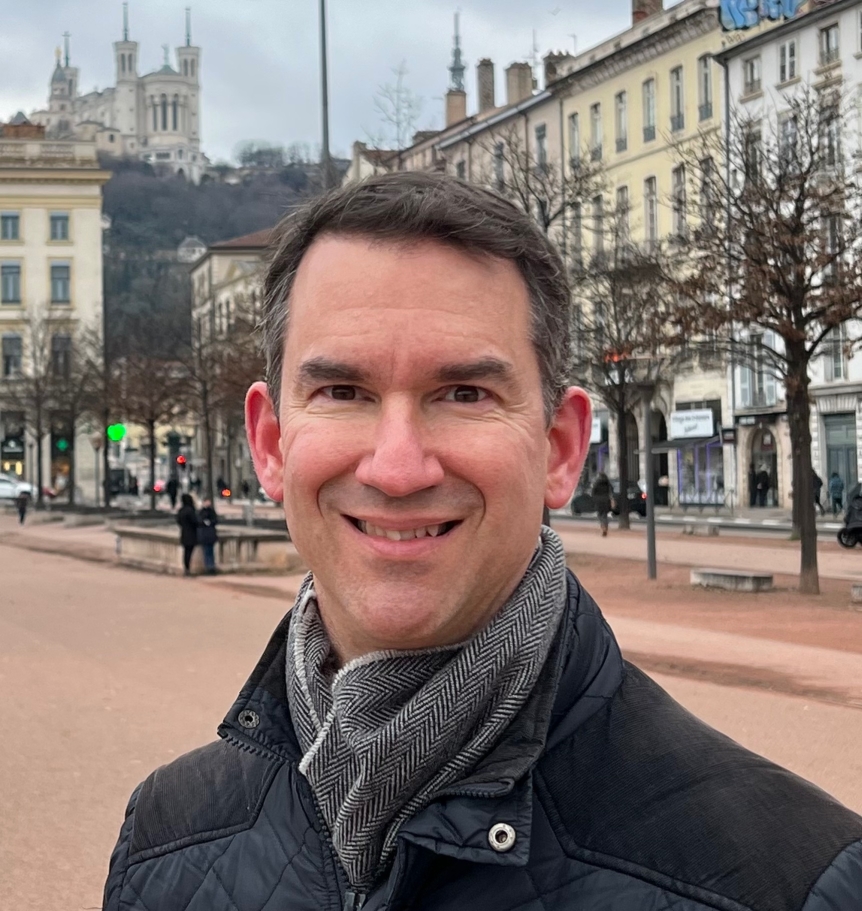New research explores how media shapes attitudes toward Black Lives Matter

During part of his sabbatical year Middlebury College professor Erik Bleich took his research and teaching talents across the Atlantic to Lyon, France. There, he served as the Fulbright-Tocqueville Distinguished Chair and as a fellow at the Collegium de Lyon, researching how the media covers Black Lives Matter.
Black Lives Matter is a racial and social justice movement that started in the United States in July 2013 after the death of Trayvon Martin. The movement focuses on the systemic racism and racial inequality, discrimination, and violence experienced by black people, especially regarding police brutality.
Bleich researched the Black Lives Matter movement in France as part of his Fulbright grant. The Fulbright program offers grants and scholarships to students and scholars to study, conduct research, exchange ideas, and ultimately create cultural understanding and find solutions to worldwide challenges. As its Fulbright-Tocqueville Distinguished Chair, Bleich was in France from January to July 2022.
“I have been interested in how marginalized groups are viewed by non-marginalized groups, and how politics and society are organized around this cleavage,” explained Bleich, who has been a political science professor at Middlebury since 1999. Bleich has served as Middlebury’s Director of European Studies, Director of International Politics & Economics, and Chair of Political Science. He is currently Charles A. Dana Professor of Political Science.
In his research, Bleich collected articles from two to four different newspapers in five different countries, including the United States, Canada, Britain, France, and the Netherlands. He drew on newspaper databases such as NexisUni and ProQuest and assembled about 30,000 articles for analysis. He focused on coverage in major newspapers such as The New York Times and The Wall Street Journal in the United States and Le Monde and Le Figaro in France.
“We found that by far the most significant factor driving media coverage of topics like Black Lives Matter over the past eight years was the murder of George Floyd—this one event led to a tremendous spike in the number of articles not only about Black Lives Matter, but also about related topics such as systemic racism and white privilege,” said Bleich.
After collecting the texts of these articles, Bleich used computer-assisted methods to assess the quantity, tone, language used when discussing specific topics. One such computer method that Bleich employed was “sentiment analysis,” a process that gauges text to determine whether an article is positive, negative, or neutral.
Another method was “topic modeling,” which uses an algorithm to identify sets of words that “hang” together in multiple articles. Meanwhile, “collocation analysis” identifies words that are found beside each other or in the same sentence. In addition to the computer-assisted methods Bleich used qualitative methods to read a sample of 35 articles from the U.S. and 35 articles from France regarding their coverage of Black Lives Matter in France.
“It turns out that the U.S.-origin articles were much more positive about BLM in France than most articles about Black Lives Matter in the U.S. itself,” said Bleich. “French articles were mixed. The ones that were negative were mostly in the right-leaning newspaper and were mostly critiquing the importation of American race-based concepts and movements.”
According to Bleich, research shows that newspapers commonly serve as agenda-setters versus other media outlets. Newspapers also tend to be more factual versus emotional and therefore less prone to sensationalism or hyperbole. However, Bleich and his team plan to expand their research. Specifically, the team plans to look at social media platforms like Twitter, at Google searches, and at government documents and data, such as congressional records, bills, and court cases. The team also began to research the diffusion of ideas, asking questions such as how do concepts like “institutional racism” or “critical race theory” move from the academy to public knowledge?
In the more immediate future, though, Bleich plans to use his research to teach a senior seminar in Middlebury College’s political science department. The course will be titled “The Media and the Marginalized,” a course that he piloted and taught during his leave year.
“Honestly, it was challenging to do as much as I wanted because I was teaching two courses at the Institute of Political Studies in Lyon and had 90 students. That’s unusual for a sabbatical. It was also challenging to collect the data. Some media data that used to be widely accessible are no longer easily available,” shared Bleich.
“But, researching and teaching abroad as part of the Fulbright program and as a fellow of the Collegium de Lyon was an incredibly enriching experience,” added Bleich. “It allowed me to advance my research agenda and to try out courses that I will bring back to Middlebury. I could not be happier with my leave year.”

